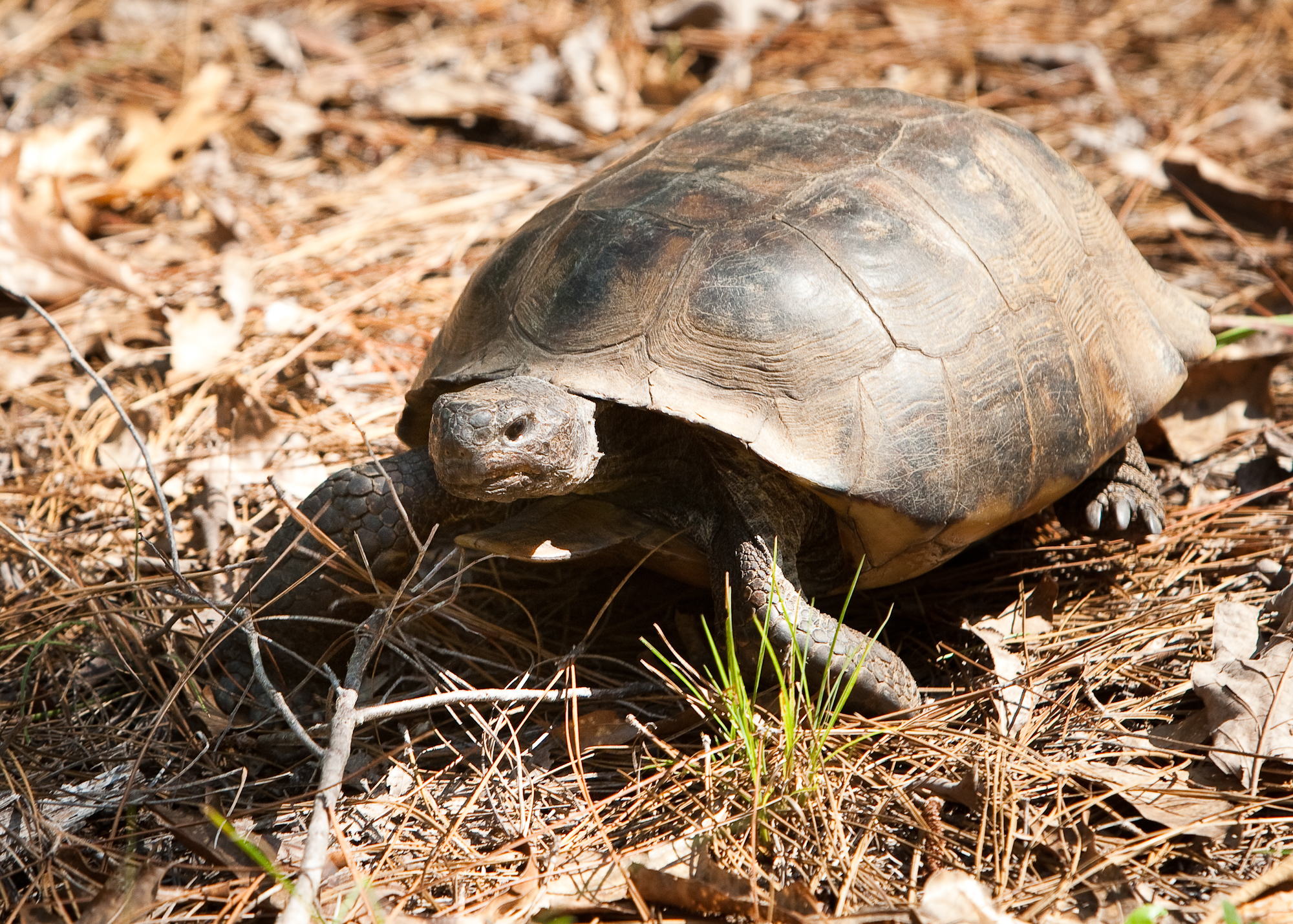
The majority of gopher tortoises live on private land, and concerned agencies need help documenting the number of tortoises in Alabama. Photo by Billy Pope
By DAVID RAINER, Alabama Department of Conservation and Natural Resources
The Alabama Wildlife and Freshwater Fisheries (WFF) Division and Alabama Forestry Commission (AFC) are on an enlistment drive to help count one of the iconic species in Alabama’s longleaf pine forests, the beloved gopher tortoise.
Considered a keystone species of the longleaf ecosystem, the gopher tortoise is crucial for the survival and health of a variety of animal species, including the federally threatened Eastern indigo snake. In fact, more than 360 species of mammals, birds, reptiles, amphibians and invertebrates are known to spend all or a portion of their lives in either active or abandoned gopher tortoise burrows.
The reason the agencies must ask for help to estimate the population is that the vast majority of gopher tortoises live on private land in Alabama as well as throughout most of its range in the Southeast U.S.
The gopher tortoise is already listed as federally threatened in three Alabama counties – Washington, Mobile and Choctaw – and a decision on a possible listing as threatened in other parts of Alabama is expected in 2022. WFF, AFC and other partners are working together to determine if the population is large enough to preclude the gopher tortoise’s listing as federally threatened.
WFF and the AFC teamed with other concerned partners to conduct a series of presentations in south Alabama to encourage landowners to participate in the survey program. These workshops were funded by the American Forest Foundation.
Ericha Shelton-Nix, WFF’s Gopher Tortoise Program Coordinator, said the presentations focused on several issues, including whether gopher tortoises can be protected without further regulation.